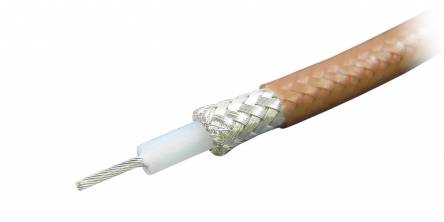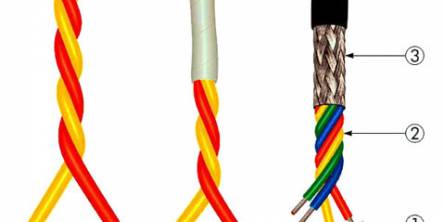Know How To Avoid Common Mistakes When Buying Inverters For Home

More than an inconvenience, power cuts compromise work, comfort, and even safety at home. The solution? Buy a much-needed power backup device - an inverter! But there is a catch. The market is flooded with choices, and investing in the wrong inverters for the home can lead to higher electricity bills and poor performance.
Already worried? Don’t be. This blog highlights the most common mistakes people make when buying inverters for their homes. It also provides tips on how to avoid them. So, take a cup of coffee, and read on to make sure your next purchase is smart, reliable, and perfectly suited to your power needs.
Top Mistakes People Make When Buying Home Inverters and Their Fixes
Have you ever heard someone say, “I wish I knew that before buying my inverter”? If yes, then take a look at the following mistakes people make when they buy an inverter for their home and how you can avoid them.
Not Assessing Power Requirement
The Mistake: It is quite common for homeowners to purchase an inverter without determining the power requirement. The result? The inverter is not able to handle the load, causing power failure, abrupt supply, voltage fluctuations, or even damage to electronics.
The Fix: Create a list of the essential appliances, such as TV, lights, fans, WiFi, or fridge, that you would want to run smoothly during an outage. Review their power rating and sum them to know the total requirement. Also, keep a buffer of 20-25% to keep overloading issues away.
Ignoring Battery Backup Time
The Mistake: All inverters for home provide the same backup time is a myth. It is determined by the capacity of the battery and the power it uses during an outage. If you do not want to stay in the dark, never skip this factor.
The Fix: Assess how you would want your inverter to run smoothly during a power outage. Live in an area with long and frequent electricity outages? Choose a higher Ah (ampere-hour) battery. You can also calculate the backup time using this formula. It will help you pick a battery and an inverter that caters to your needs.
Backup Time = Battery Capacity (Ah) × Battery Voltage (V) × Efficiency (%) ÷ Total Load (W)
Overlooking Inverter-Battery Compatibility
The Mistake: Most people purchase a fancy inverter without checking its compatibility with the battery. This mismatch can be a reason for reduced battery life, inefficient charging, and damage to the system.
The Fix: Before you choose the inverter model, know the battery you have or plan to buy. You can opt for tubular batteries for long power cuts and backups, and flat ones for short outages. Also, the inverter should be designed to work effectively with the battery type.
Choosing the Wrong Type of Inverter
The Mistake: Everyone gets tempted by the most affordable option, but it is not always the right choice. To power up sensitive devices, homeowners buy square wave inverters to save money, which causes voltage fluctuations and even damage to the devices.
The Fix: First, determine what appliances and devices you want to keep powered during an outage. For basic essentials like lights and fans, square wave inverters for the home are ideal. On the other hand, sensitive appliances like a smart TV, refrigerator, WiFi router, or microwave require a sine wave inverter to mimic the power received from the grid. It is more expensive than a square wave but saves money in the long run.
Not Considering Future Load Expansion
The Mistake: You calculated the current load and purchased an inverter accordingly. Great! But what about the load that can be expanded with the upgraded washing machine or fridge? Here, your inverter can cause overloading and disruptions in the power supply.
The Fix: While investing in an inverter, always plan ahead. Remember, life evolves, and the need for appliances multiply. Pick a model that features a slightly higher capacity than your current load. The golden rule? Keep a buffer of 20-30% to truly make a difference, saving replacement costs in the future.
Ignoring Installation and Maintenance Factors
The Mistake: If you also think inverters for home are a plug-and-play device, then you are forgetting the factors like installation, space, ventilation, or maintenance. Ignoring them can result in overheating, less battery life, and safety risks.
The Fix: Want adequate installation? A ventilated and spacious area, away from direct sunlight or moisture, will be perfect. Call a professional for the proper installation, ensuring wiring, earthing, and fuse protection. Plus, select a place where it is easy to check the water levels.
Summing Up
Buying an inverter is not something you do every day. It is an investment that offers comfort and convenience during unexpected outages. From calculating your actual power requirement to planning for future needs, a little homework goes a long way. The next time you shop for an inverter, take the above-mentioned things into consideration. With the right information in hand, you can choose a reliable, efficient, and long-lasting inverter for your home. So, ditch the guesswork and make an informed decision to power up your home in the right way.
Similar Articles
Finding the ideal RF/microwave cable assembly can be daunting due to the wide variety of available products and the numerous aspects of each
When it comes to high-performance materials for various industrial applications, PTFE (Polytetrafluoroethylene) stands out as a top choice
Equipment like telescopes, satellites, and various industrial solutions are more sensitive to electrical interferences now, more than ever. In case of a power generator, telecommunication systems, or sophisticated manufacturing facilities, monitoring the direct current parameters is of utmost importance
Discover how to source high-quality, affordable LED downlights for commercial projects. Learn key factors like supplier reliability, customization, and cost-efficiency.
When most people think of industrial control panels, they picture factories, power plants, or maybe a water treatment facility. But these unsung heroes of automation and control are found in some of the most unexpected, and downright bizarre, places
Older homes often have hidden inefficiencies that increase energy bills and pose safety risks. Leaky windows, outdated insulation, and aging electrical systems can silently drive up costs while jeopardizing safety.
In extreme industrial settings, where temperature fluctuations, moisture, dust, and physical impact are constant challenges, traditional switches often fail to deliver long-term reliability. This is where piezo switches stand out, offering unmatched durability, resilience, and performance in the harshest conditions.
Have you ever thought about why your equipment shuts down randomly and flickers? The problem must be with the voltage fluctuation in the power supply.
Discover why spring-loaded pogo pins are essential in modern electronics, offering reliable, durable connections that boost performance in diverse applications.









